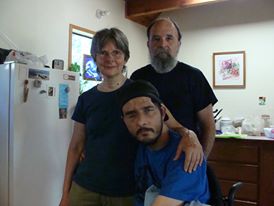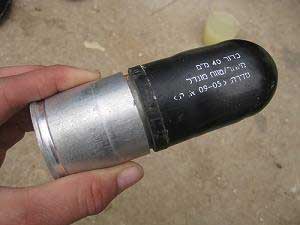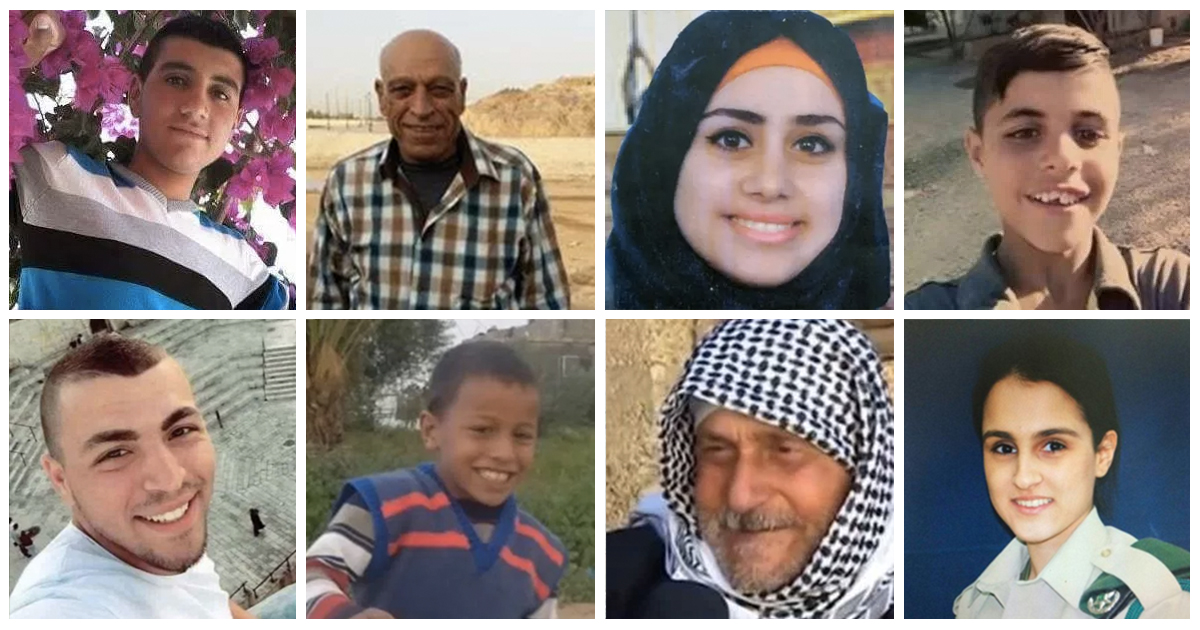| Donate | Contact Us | Materials | Subscribe | Israel-Palestine Timeline | Israel-Palestine News | |
 |
|
Myra Noveck & the New York Times:
|
|||||||||||||||||||||||
Alison Weir is executive director of If Americans Knew and president of the Council for the National Interest. For more information on Anderson, videos of the incident, and the latest updates go to Justice4tristan.org. Ni'lin is also sometimes referred to as Nilin or Na'alin. |
The New York Times recently published a news brief, reporting that Israel is going to re-investigate an incident in which an American citizen, Tristan Anderson, was permanently maimed.
 Anderson suffered extensive brain damage (part of his frontal lobe was destroyed) and paralysis, and was blinded in one eye, after Israeli soldiers shot him with a tear gas canister intended as a "barricade penetrator" from inappropriately close range. According to eyewitnesses, Anderson was shot as he was taking photographs in a Palestinian village after an unarmed protest against the illegal and extensive confiscation of village land.
Anderson suffered extensive brain damage (part of his frontal lobe was destroyed) and paralysis, and was blinded in one eye, after Israeli soldiers shot him with a tear gas canister intended as a "barricade penetrator" from inappropriately close range. According to eyewitnesses, Anderson was shot as he was taking photographs in a Palestinian village after an unarmed protest against the illegal and extensive confiscation of village land.
Israeli forces have a history of shooting unarmed protesters with these canisters, which one expert likens to "a small missile."
Yet the New York Times report, "Israel Reopens Inquiry Into Activist's Injury" (July 11, 2013, P. 9) reveals few of these details.
The Times article states that Anderson was injured when he was hit in the head by a tear gas canister and is partly paralyzed and blind in one eye, but does not mention his extensive brain damage and that his paralysis is over half his body. It doesn't reveal that the type of canister use d is extraordinarily destructive or that it was fired at such close range.
d is extraordinarily destructive or that it was fired at such close range.
The report also omits the fact that this incident is part of a pattern, even though Israeli forces have killed at least two Palestinians with these canisters, and shot out the eye of an American student with another. According to a report by an Israeli organization, Israeli forces "frequently fire tear-gas canisters directly at demonstrators." [Graphic image of one victim here]
The Times report states that the protest was "against the extension of Israel's separation barrier in the West Bank" without citing the villagers' actual complaint -- the confiscation of their land and, thus, livelihood by Israel. It similarly fails to mention that over previous decades Israel confiscated over 80 percent of the village land and now intends to take between a quarter and a third of what remains to build the "barrier."
Finally, the Times report repeats, without attribution, the Israeli security forces' claim that the shooting occurred "during a clash," implying that it happened accidentally during a violent engagement, ignoring eyewitness testimony that the protest had dissipated and most people had gone home.
The byline on the Times report is Myra Noveck. Noveck has bylined a number of stories for both the New York Times and its European affiliate the International Herald Tribune, where ZoomInfo lists her as a contributor.
 Noveck is frequently cited in New York Times news reports as a contributor to stories, and a prominent Israeli newspaper calls her the Times' "deputy bureau chief" for the Times' Jerusalem bureau, its bureau for covering Israel-Palestine.
Noveck is frequently cited in New York Times news reports as a contributor to stories, and a prominent Israeli newspaper calls her the Times' "deputy bureau chief" for the Times' Jerusalem bureau, its bureau for covering Israel-Palestine.
From information she has posted online, it appears that Noveck is an American who moved to Israel after college. According to Torah in Motion, which promotes Jewish dialogue and speakers, two of her children were serving in the Israeli military as of 2012. It is unclear whether her children are currently still on active duty or whether they are now serving as Israeli reserve soldiers.
In either case, it appears that while Noveck has been writing and contributing to news reports about Israel and about the Israeli military, her children have been serving in it.
Such a situation appears to constitute a clear conflict of interest – even according to the Times' own ethics standards – and should normally cause a journalist to be assigned to a different area of reporting.
 When it came to light in 2010 that then chief of the Times' Jerusalem bureau, Ethan Bronner, had a son in the Israeli military, even the Times' own ombudsman concluded that Bronner should be reassigned.
When it came to light in 2010 that then chief of the Times' Jerusalem bureau, Ethan Bronner, had a son in the Israeli military, even the Times' own ombudsman concluded that Bronner should be reassigned.
In response to requests for information and interviews with Noveck and Times Executive Editor Jill Abramson, a Times spokesperson issued a written statement claiming that Noveck is "not a reporter," but merely a "long-time news assistant in The Times's bureau in Jerusalem."
The statement went on to say: "She works under the direction of our bureau chief primarily doing translation and research. She is an Israeli citizen. If she has children and they are also Israeli citizens, presumably they would be required to serve in the military*. This situation would not constitute a 'breach with impartiality.'"
I wrote back pointing out (1) that Times' conflict of interest requirements include family members and (2) that Noveck's byline appeared on a news report. The spokesperson then admitted that Noveck "on rare occasions received a byline" but still maintained that "she is not a reporter."
However, the Times' published ethics standards generally extend ethical requirements "to all newsroom and editorial page employees, journalists and support staff alike."
This incident is part of a pattern of ethics violations concerning reporting on Israel.
 Isabel Kershner, a senior Times reporter in the region, is an Israeli citizen whose husband, according to Fairness and Accuracy in Reporting (Fair) works for an Israeli organization, the Institute for National Security Studies (INSS), which has close ties to the Israeli military and is "tasked with shaping a positive image of Israel in the media."
Isabel Kershner, a senior Times reporter in the region, is an Israeli citizen whose husband, according to Fairness and Accuracy in Reporting (Fair) works for an Israeli organization, the Institute for National Security Studies (INSS), which has close ties to the Israeli military and is "tasked with shaping a positive image of Israel in the media."
A FAIR study of articles that Kershner had written or contributed to since 2009 found they had overwhelmingly relied on the INSS for analysis about events in the region.
A multitude of journalists at the Times and elsewhere have had close personal and family ties to the Israeli military – almost none of them ever disclosed, including the previous Times bureau chief Ethan Bronner, as noted above.
Jonathan Cook, a British journalist based in Israel, quotes a Jerusalem bureau chief who stated: "... Bronner's situation is 'the rule, not the exception. I can think of a dozen foreign bureau chiefs, responsible for covering both Israel and the Palestinians, who have served in the Israeli army, and another dozen who like Bronner have kids in the Israeli army."
Cook writes that the bureau chief explained: "It is common to hear Western reporters boasting to one another about their Zionist credentials, their service in the Israeli army or the loyal service of their children."
For more information on journalists' pro-Israel conflict of interest violations see "US Media and Israeli Military: All in the Family," "Jodi Rudoren, Another Member of the Family: Meet the New York Times' New Israel-Palestine News Chief," "Ethan Bronner's Conflict With Impartiality," and "AP's Matti Friedman: Israeli citizen and former Israeli soldier."
It would appear from this pervasive pattern that many of the owners, editors, and journalists who determine U.S. reporting on Israel-Palestine believe that normal ethics requirements don't apply in regard to Israel.
This situation holds serious consequences for the American public. American taxpayers give Israel over $8 million per day (more than to any other country) and, as a result, most of the world views Americans as responsible for Israeli actions, exposing us to escalating risks.
Osama Bin Laden and others have often cited U.S. support for Israeli crimes as a primary cause of hostility against us.
It is thus essential that Americans be accurately and fully informed. This is unlikely to happen while those reporting for American news media (whether "reporters" or "assistants") have such close ties to Israel and its powerful military forces.
Anderson was shot in 2009 after a protest in the Palestinian village of Ni'lin in the West Bank. Since 2007 Ni'lin villagers and others have been demonstrating against the illegal Israeli confiscation of up to a third of the village's land (following previous confiscations in which the majority of the village's original land was taken by Israel).
 Gabby Silverman, a witness to the shooting of Tristan Anderson, describes the incident: "Tristan had wandered off with his camera. I was looking at him. And out of nowhere, they opened fire on us. The first shot they fired, they got Tristan."
Gabby Silverman, a witness to the shooting of Tristan Anderson, describes the incident: "Tristan had wandered off with his camera. I was looking at him. And out of nowhere, they opened fire on us. The first shot they fired, they got Tristan."
Anderson is now in a wheelchair with permanent brain damage. He is hemiplegic (paralyzed on the left, formerly dominant, side of his body). He is blind in his right eye and part of his head and frontal lobe were destroyed.
The kind of canister Israeli forces shot at Anderson is particularly dangerous, according to their manufacturer itself. The shells have a range of several hundred meters, yet Israeli soldiers fired at Anderson from approximately 60 meters away.
 The canisters' manufacturer, Combined Systems, Inc. (CSI), classifies them as "barricade penetrators" and advises that they should not be fired at people. A spokesperson for an Israeli human rights organization says, "It's like firing a small missile." Because of an internal propulsion mechanism, they hurtle through the air at 122 meters per second.
The canisters' manufacturer, Combined Systems, Inc. (CSI), classifies them as "barricade penetrators" and advises that they should not be fired at people. A spokesperson for an Israeli human rights organization says, "It's like firing a small missile." Because of an internal propulsion mechanism, they hurtle through the air at 122 meters per second.
CSI is reportedly the primary supplier of tear gas to Israel. A watchdog group reports that the company flew the Israeli flag at its Jamestown, Pennsylvania, headquarters until, in advance of a planned Martin Luther King Day demonstration, CSI took it down and replaced it with the Pennsylvania state flag.
According to an in-depth report on CSI by Pennsylvania professor Dr. Werner Lange, the company was founded by two Israelis, Jacob Kravel and Michael Brunn.
A month after Anderson was shot, a Palestinian nonviolence leader was killed by this same type of tear gas canister when an Israeli soldier shot it into the victim's chest (the fifth Palestinian killed in Ni'lin by the Israeli military in a year and a half).
 The next year Israeli forces fired a similar canister at a young American art student, Emily Henochowicz, destroying one eye. An eyewitness reported that an Israeli soldier intentionally aimed the canister at Henoschowitz while she was participating in a nonviolent demonstration.
The next year Israeli forces fired a similar canister at a young American art student, Emily Henochowicz, destroying one eye. An eyewitness reported that an Israeli soldier intentionally aimed the canister at Henoschowitz while she was participating in a nonviolent demonstration.
In 2012 another Palestinian was killed when an Israeli soldier shot him in the face with what appears to have also been a long-range CSI canister.
 The occupying Israeli forces have consistently suppressed the Ni'lin villagers' unarmed protests against the stealing of their land. As of 2012, Israel had arrested more than 350 villagers, killed 5 -- including a 10-year-old child – injured "multiple" protesters with live ammunition, and broken the bones of 15 people with tear gas projectiles, according to the villagers' website, created to document the situation.
The occupying Israeli forces have consistently suppressed the Ni'lin villagers' unarmed protests against the stealing of their land. As of 2012, Israel had arrested more than 350 villagers, killed 5 -- including a 10-year-old child – injured "multiple" protesters with live ammunition, and broken the bones of 15 people with tear gas projectiles, according to the villagers' website, created to document the situation.
There are similar reports from other Palestinian villages, where several other protesters have died from tear gas fired by Israeli forces.
It is unfortunate that almost none of this was even hinted at in Myra Noveck's New York Times report.
#
*While military service is required for both males and females in Israel, only about 50 percent actually serve; many Israelis have refused to serve in the Israeli military for reasons of conscience.
| Israel-Palestine Timeline |
 |
Israel-Palestine Timeline: The human cost of the conflict records photos and information for each person who has been killed in the ongoing violence. |
| History of the Israel Lobby |

Buy it on Amazon, and visit the book website for reviews, more ordering options, and upcoming author events. |
| IsraelPalestineNews.org |

Information largely missing from U.S. news reports. Read the Blog |
| Media Report Cards |
Off the Charts: ABC, CBS, & NBC |
Off the Charts: New York Times |
| Related Organizations |
| Stay Informed |
|
Sign up for our mailing list and receive an email whenever we post a new article on our news site, Israel-Palestine News. |
This website is printer-friendly. Please Print this article and share it with your friends and family.